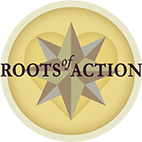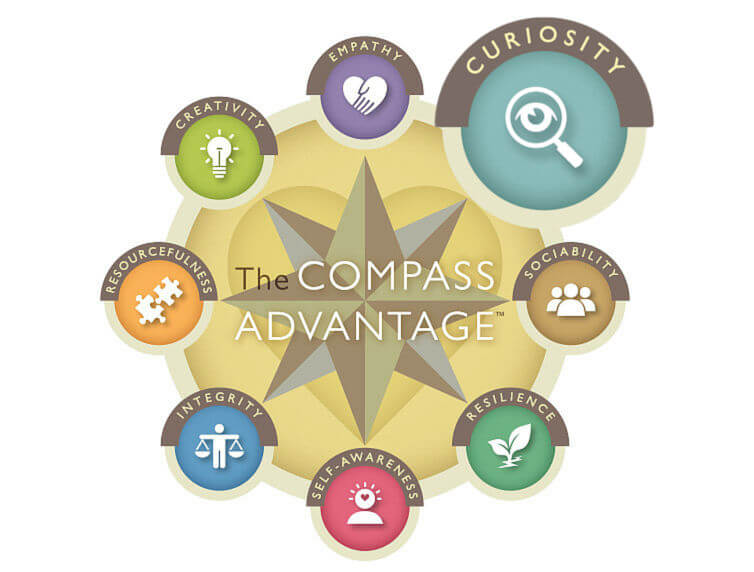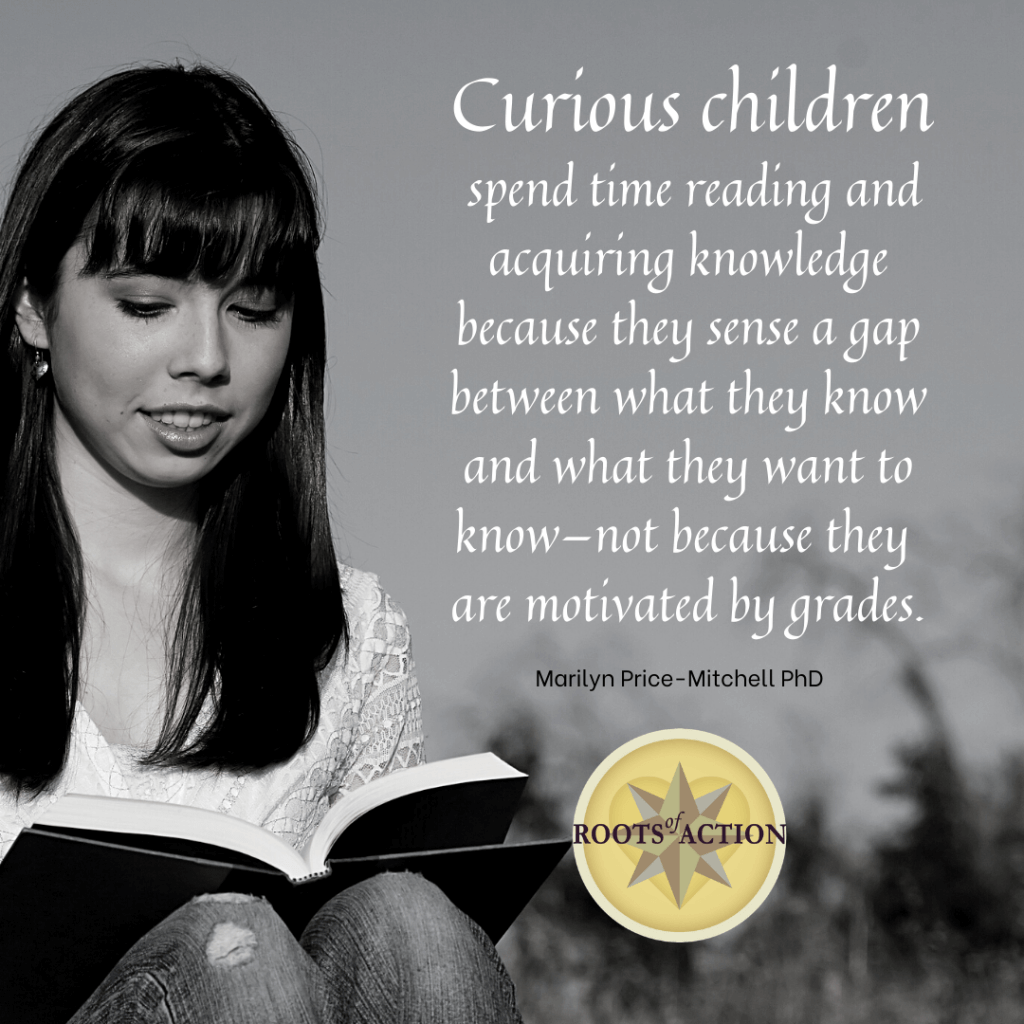
Curiosity and learning are intricately connected.
According to research, the three pillars of academic performance are intelligence, effort, and intellectual curiosity. Did you know that curiosity and effort rival the influence of intelligence on student success?
Like the Mars rover Curiosity is designed to explore the details of the Gale Crater, the mission of human curiosity is to explore the universe of individual and collective thinking, feeling, sensing, and intuition. It is an internal force that propels learning and personal growth.
Curiosity is most often driven by a question or set of questions to be answered. For example, the Curiosity rover seeks to answer the question: “Did Mars ever have the right environmental conditions to support small life forms called microbes?”
This is the second of nine articles in our Student Success Series for Educators. We encourage you to read the introduction to the series, Student Success Develops from Inside Out.
What is Curiosity?
Curiosity is the strong desire to learn something new. When children and adults seek answers to questions, their curiosity motivates them to gain additional knowledge and information. This process is a basic element of human cognition, a motivator for learning, and a critical aspect of human development.
What triggers curiosity? It is the joy of exploration — a hidden force that drives learning, critical thinking, and reasoning. We recognize curiosity in children when we see them exploring their environment, devouring books, seeking information, asking questions, investigating concepts, manipulating data, searching for meaning, listening to their bodies, connecting with people and nature, and seeking new challenges.
Why is Curiosity Important?
Most teachers understand that curiosity supercharges learning. But they also know that many students can achieve high grades without being curious by understanding the system of test-taking and dutifully doing their homework. Curious children spend time reading and acquiring knowledge because they sense a gap between what they know and what they want to know— not because they are motivated by grades. In fact, when kids are in curiosity’s grip, they often forget the immediate goals at hand because they are preoccupied with learning.
If you suspect that curious kids fare better in careers and life, you are right, and for a variety of reasons. Research shows that people who were curious about a topic retained what they learned for longer periods of time. And even more impressive, research has linked curiosity to a wide range of important adaptive behaviors, including tolerance of anxiety and uncertainty, positive emotions, humor, playfulness, out-of-box thinking, and a noncritical attitude — all attributes associated with healthy social outcomes.
Our brains like curiosity! When curiosity is aroused, the brain prepares for learning and makes subsequent learning more rewarding.
Curiosity is part of The Compass Advantage framework of positive youth development because it is at the heart of lifelong learning. It has been studied by researchers for decades and is a core component of diverse educational frameworks, including social-emotional learning (SEL), developed by the Collaborative for Academic, Social, and Emotional Learning (CASEL); Character Lab playbooks, founded by psychologist Angela Duckworth, the Whole School, Whole Community, Whole Child (WSCC) model; and the Partnership for 21st Century Learning.
Curiosity not only gives children an advantage in school, but today’s business leaders agree that it is also at the heart of thriving organizations.
Psychologists view curiosity as a life force, vital to happiness, intellectual growth, and wellbeing. It is interconnected with each of the other abilities on the Compass — sociability, resilience, self-awareness, integrity, resourcefulness, creativity, and empathy. Like most human abilities, curiosity also has a dark side. After all, it did kill the cat! And without proper nurturing by teachers and parents, unregulated curiosity can lead students down rabbit holes that waste time, obstruct goals, or damage health.
The greatest advantage of curiosity lies in its power to motivate learning in areas of life and work that are meaningful to the learner. It points students toward the knowledge, skills, relationships, and experiences they need to live full and productive lives.
12 Ways to Stimulate Curiosity and Learning in Your Classroom
1. Value and reward curiosity.
Often, the temptation is to reward students when their curiosity leads to a desired outcome or good grade. But it is more important to notice and reinforce curiosity when you see it in action. When you praise students by describing how their questions, explorations, and investigations are contributing to their own or classroom learning, you let them know that they are valued for their motivation, regardless of the grade they achieve.
2. Teach students how to ask quality questions.
Quality questions are a vital medium for curiosity. Google is great at finding answers but does not stimulate the formation of questions. Good questions contain “why,” “what if,” and “how.” An excellent book for understanding the art of questioning is A More Beautiful Question by Warren Berger.
3. Encourage students to tinker.
Tinkering might be constructive play with feelings, concepts, ideas, and materials. How can students create a new widget, essay, blog article, poem, science experiment, service, or product from their explorations? Tinkering with materials, thoughts, and emotions stimulates curiosity and leads to innovative outcomes.
4. Notice when kids feel puzzled or confused.
Is there a “teachable moment” that will spark a desire to search for answers? How can you invite students to see problems as mysteries waiting to be solved?
5. Spread the curiosity around.
Create opportunities for more-curious and less-curious students to work together in project-based learning. Curiosity is contagious in groups working toward a real-world common goal, helping to cross-pollinate questions and new ideas.
6. Use current events.
News reports can lead students to ask purposeful questions that help unearth what is beneath the surface of societal problems. According to research, asking “why” is the critical ingredient in unraveling these difficult conflicts. This often gets to the fundamental reason for why people disagree about solutions.
7. Teach students to be skeptics.
The term skeptic is derived from the Greek skeptikos, meaning “to inquire” or “to look around.” A skeptic requires additional evidence before accepting someone’s claims as true. He or she is willing to challenge the status quo with open-minded, deep questioning. Galileo was a skeptic. So was Steve Jobs. Encourage students to explore the art of positive skepticism.
8. Examine a variety of cultures and societies.
How is one culture or society uniquely different from another one? Encourage students to investigate their genetic or emotional links to other cultures. Curiosity is an emotional motivator! Why do students relate to certain beliefs or values that other societies hold?
9. Model curiosity.
You can model curiosity through your respectful relationships with students by exploring their interests, expanding upon their ideas, and engaging them in meaningful dialogue about what matters most.
10. Teach Design Thinking.
Curiosity is at the heart of Design Thinking, an iterative process used to understand a problem, challenge assumptions, and create solutions. The nonprofit Design for Change offers curriculum to help students design solutions for community and global change. Their design process (Feel, Imagine, Do, Share) promotes the practice of curiosity and its interconnected system of internal strengths.
11. Encourage curiosity at home.
Help parents understand the importance of curiosity in their child’s development and suggest ways that they can foster curiosity at home. Doing homework for children or providing answers to their questions does not develop curiosity. Supportive caregivers who encourage children to seek their own answers and talk with them about what they are learning nurture curiosity from the inside out.
12. Discuss quotes about curiosity.
Good quotes are not just for adult inspiration. Quotes can also inspire kids to become their best selves. Check out Quotes About Curiosity, an article that contains simple quotes and ideas about curiosity for kids of all ages and that support the research in positive youth development. In fact, we have an entire series of quotes for kids that promote healthy development in each of the compass abilities!
References
Gruber, Matthias J., Gelman, Bernard D., & Ranganath, C. (2014). States of Curiosity Modulate Hippocampus-Dependent Learning via the Dopaminergic Circuit. Neuron, 84(2), 486-496, https://doi.org/10.1016/j.neuron.2014.08.060
Kashdan, T.B., Sherman, R.A., Yarbro, J. and Funder, D.C. (2013), Curious People in Social Situations. J Pers, 81: 142-154. https://doi.org/10.1111/j.1467-6494.2012.00796.x
Kidd, C., & Hayden, B. Y. (2015). The Psychology and Neuroscience of Curiosity. Neuron, 88(3), 449–460. https://doi.org/10.1016/j.neuron.2015.09.010
von Stumm, S., Hell, B., & Chamorro-Premuzic, T. (2011). The Hungry Mind: Intellectual Curiosity Is the Third Pillar of Academic Performance. Perspectives on Psychological Science, 6(6), 574–588. https://doi.org/10.1177%2F1745691611421204
Student Success Series for Educators
Read the nine articles in the Student Success Series:
Student Success Develops from Inside Out – (Series Introduction)
Curiosity is a Core Predictor of Academic Performance
Social Emotional Development in the Classroom
Building Resilience in Your K-12 Classroom
Metacognitive Strategies for Student Success
Academic Integrity is Essential to Learning
Teach Students to Achieve Goals
Creative Thinking Sparks Student Engagement & Discovery
What Is Empathy? How To Cultivate It In the Classroom
Free Resources for Teachers
The Compass Youth Survey for Students ages 10-17: An online survey that can help students identify, understand, and strengthen their core abilities and impact their success as a student.
Our Community Promise: a frame-ready document that many teachers have hung in their classrooms to remind them and their students of the kind of values and habits of thinking that nurture student success.
I Have a Dream: a frame-ready document created by teens that define genuine success—to engage your students.
Reframing Success: Helping Children & Teens Grow from the Inside Out: an eBook that introduces The Compass Advantage. This eBook has been widely used by schools as a “Book Club” reading to engage parents about raising healthy children and teens.
Published: May 7, 2021





